1960s Austin-Healey Sprite Bugeye
A look back at what made the 1960s Austin-Healey Sprite “Bugeye” generation so successful at the time and so memorable today.
Classic Car Review: 1960s Austin-Healey Sprite
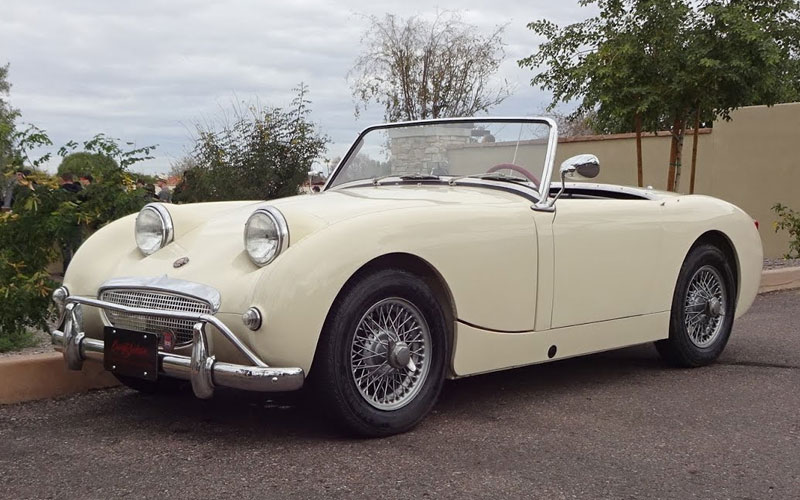
1960 Austin-Healey Sprite – Lou Costabile on YouTube | Shop Austin-Healey Sprite on Carsforsale.com
Whether you’re a car enthusiast or not, there’s no denying the charm of a 1960s Austin-Healey Sprite. Radiating classic British automotive vibes, these little sports cars are as cool as they come. Though the Sprite was built over several generations between 1958 and the early 1970s, today we’ll be looking specifically at the Mark I models, otherwise known as Bugeyes.
This era birthed a wide variety of nimble English cars, many of which came from the British Motor Corporation (BMC). In 1952, independent British auto companies that included Morris, MG, Austin, Riley, and Wolseley merged to form BMC. At the time, BMC dominated the local market with a 39% market share. That same year, BMC’s Austin division joined forces with the Donald Healey Motor Company (DHMC) – a renowned design and engineering firm – to create Austin-Healey, a now long-gone car maker whose history we look at here.
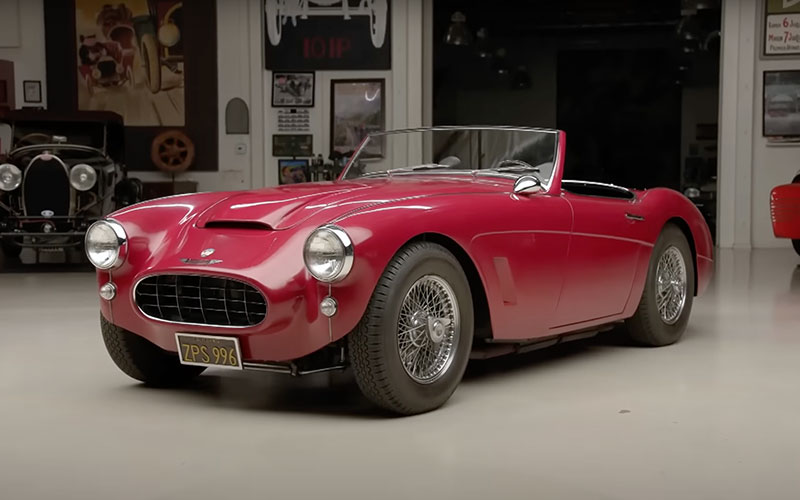
This new concern was successful with sleek sports cars like the 100 and 100-Six selling like hotcakes. However, these so-called “Big Healeys” were relatively expensive at the time with a price tag of around $3000 in 1950s dollars – putting them out of reach for many. So, Donald Healey himself got to work on a smaller, low-cost model aimed at anyone interested in simple driving fun. Described in period ads as “the sassy little brother to the 100-Six”, the new Sprite started at just $1795 and would be a success in its own right.
Historical Information
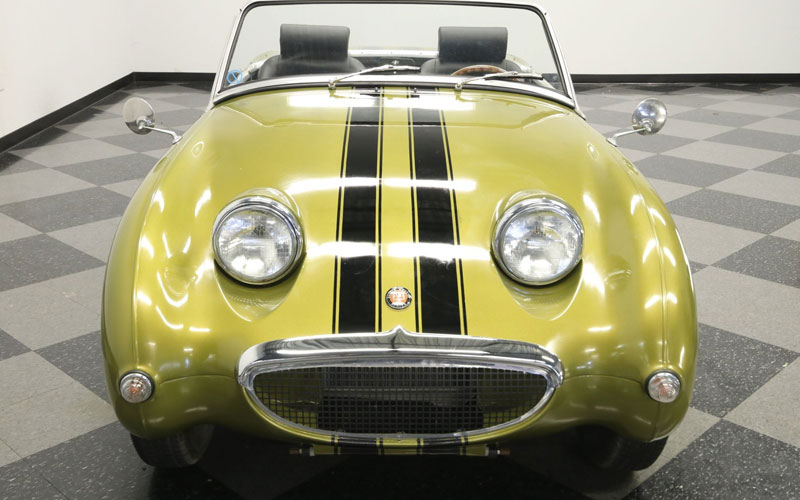
Introduced to the public during the Monaco Grand Prix in 1958, the first of the 1960s Austin-Healey Sprites made a splash with unique headlights. Originally designed to retract into the hood when not in use, a look that arrived with the later Porsche 928, the flip-up mechanism was ultimately nixed by BMC in the name of saving money. As a result, a pair of headlight pods were fixed to the hood with more than a passing resemblance to the earlier Crosley Super Sport.
Known as the “Frogeye” in its home market and “Bugeye” abroad, the new Sprite was made even cuter with a front grille that resembled a smiling mouth. Penned by longtime DHMC designer Gerry Coker, the new 1958 Sprite featured a flat windshield, simple folding soft-top, and a paint palette that included Old English White and Iris Blue. Though several more generations of the Sprite would follow, these Mark I models were the only ones sporting those distinctive bulging bug eyes.
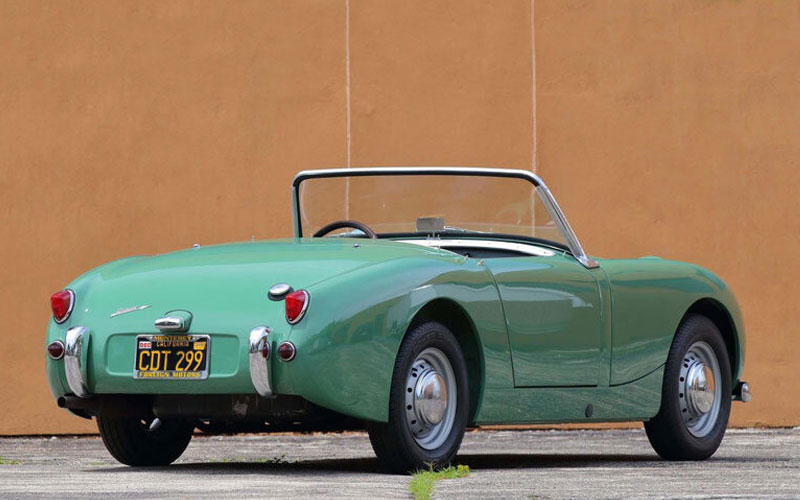
The Sprite nameplate was rather apt as it measured just 11 ½ feet long and 4 ½ feet wide with a curb weight of only 1,315 pounds. For reference, the 2023 Mazda Miata – a spiritual Sprite successor whose history we look back on here – stretches to 13 feet in length and 5 ½ feet in width, while weighing in around 2,500 pounds. The Sprite’s tiny footprint was home to a remarkably taut chassis thanks to pioneering work by DHMC engineer Barry Bilbie.
Looking to Jaguar’s D-Type for inspiration, Bilbie solved the rigidity issue inherent to any open-top vehicle with unitary construction. Rear suspension stresses were routed directly into this essentially one-piece platform, while the engine, transmission, and front suspension components were supported by a pair of “legs” extending forward from the passenger compartment.
This “semi-monocoque” construction was further stiffened by the lack of an externally accessible trunk and large one-piece front-end design. Combining the hood, front fenders, and radiator cowl into a single piece of sheet metal, this whole assembly was hinged along the windshield. Not only did this keep the structure tight, but it also enabled unfettered access to the engine bay when raised.
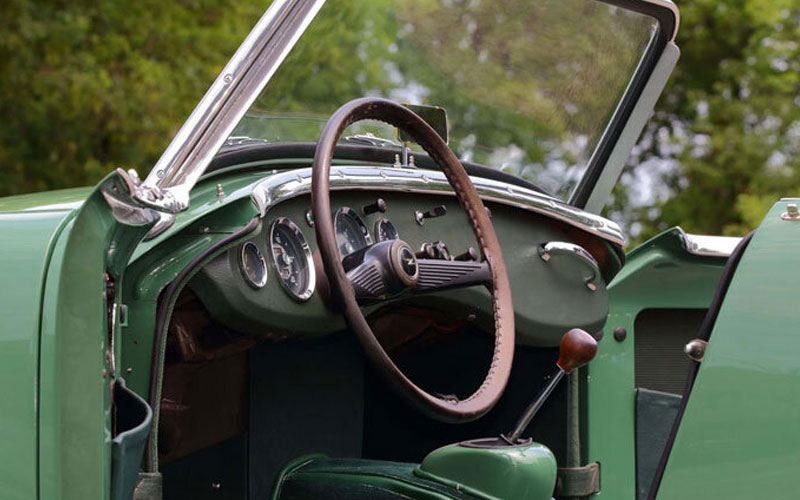
Getting inside the Mark I Sprite required reaching over the door to pull the inner release as there were no exterior door handles. This minimalistic approach was all part of delivering a low-cost fun driving experience. In that vein, there was no radio, carpeting, or really any creature comforts. A heater was optional as were plexiglass sliding windows and a tachometer.
Interior panels and upholstery were a “PVC-coated” fabric that was hard-wearing and inexpensive. Another interesting quirk of the Sprite was trunk access. As noted above, the rear end was a single piece. This meant owners had to flip the two seats forward and rummage around for cargo or the spare tire. Due to its relatively large size and total lack of illumination, this effort was affectionately known as “potholing” in the UK – or spelunking on this side of the pond. All of which was part of the Sprite’s charm.
Mechanical Features
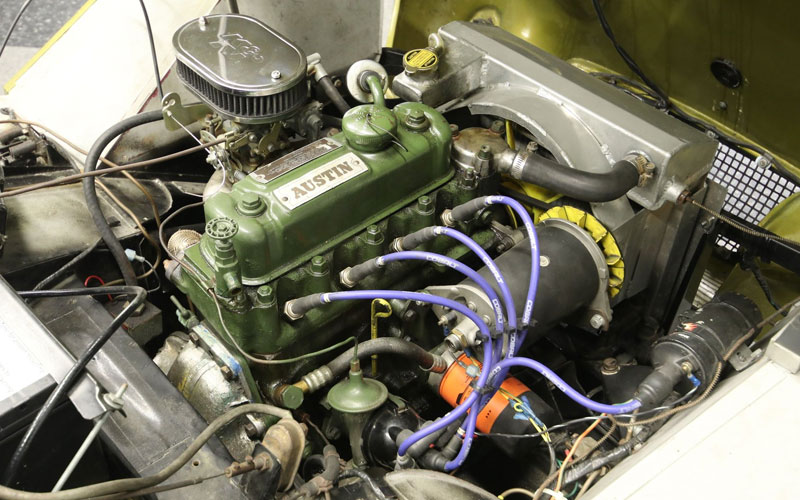
During its entire 1958-1961 production run, the first-gen Austin-Healey Sprite was powered by a 948-cc inline-4. Borrowed from the wee Austin A35, this A-Type engine was upgraded for Sprite duty with twin semi-downdraft 1 1/8-inch SU carburetors. Running an 8.3:1 compression ratio, this little overhead-valve motor was rated for just 43 horsepower and 52 lb-ft of torque. It paired with a 4-speed manual transmission – featuring synchromesh on gears 2, 3, and 4 – to power the rear wheels.
Now, even with its flyweight body, that much power did not translate to blistering straight-line speed. Testing by British magazine The Motor clocked a ’58 Sprite at a leisurely 20 seconds in the 0-60 mph run on to a top speed of just over 80 mph. However, the new roadster was intended as an affordable gateway to Austin-Healey Sprite racing, much like sporting versions of the earlier Austin 7.
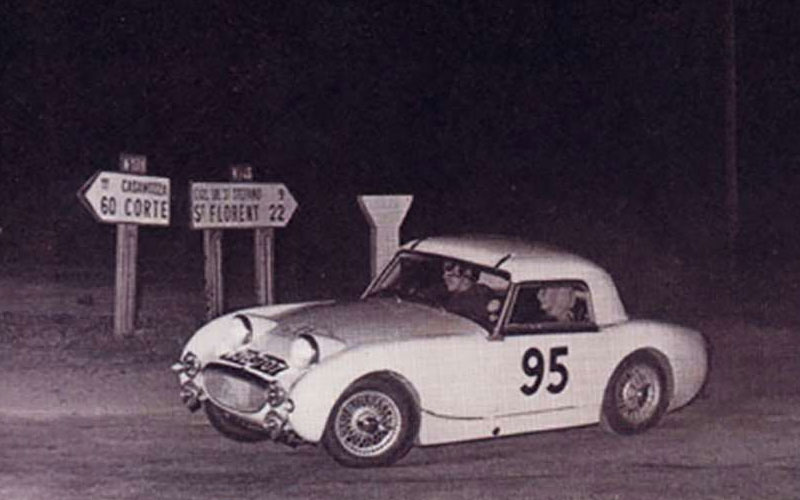
To that end, the Sprite was equipped with rack-and-pinion steering from the Morris Minor 1000 and drum brakes all around with 13-inch pressed steel wheels. The independent front suspension consisted of a lower wishbone with a coil spring and lever-type shock absorber that served as the top link. Out back were elliptic leaf springs mounted in reverse such that the thick ends were mounted to the chassis ahead of the rear axle along with dampers and radius arms.
No stranger to racing, BMC was quick to enter their new Austin-Healey Sprite in competition, including the 1959 12-Hours of Sebring in Florida. Their prowess in this arena arguably influenced the modern-day track-centric rides we highlight here. A prowess that was on display at that Sebring race where the Sprite took 1st, 2nd, AND 3rd place in its class. Upgrades for the race included larger carburetors, prototype disc brakes, and a dual-plate clutch – all of which would later be offered as part of an optional Sebring package.
Conclusion
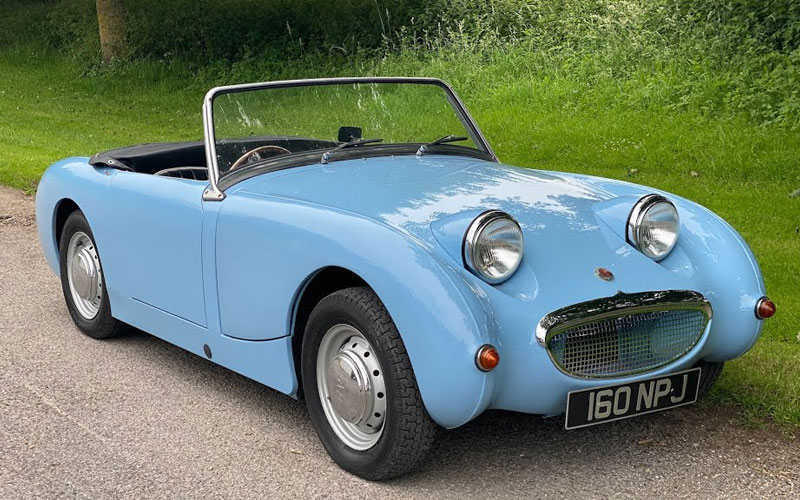
1960 Austin-Healey Sprite – Robin Lawton Vintage & Classic Cars on YouTube | Shop Austin-Healey Sprite on Carsforsale.com
Between the unique styling, go-kart handling, and track-burnished marketing success, the Mark I Sprite was being sold as fast as BMC could build them with a total production of nearly 49,000 between 1958 and 1961. The 1960s Austin-Healey Sprite lineup would continue to evolve into the final Mark IV generation that ran until 1971. But starting with the second generation, the design changed dramatically and sprouted a badge-engineered MG Midget, cousin to the MGA that we look back on here.
Though the entire Sprite series exudes old-school British car cool, the Mark I Bugeye Sprite is in a class of its own thanks to that unique front end. It ushered in a stretch of affordable access to track-day adventures for a wide range of enthusiasts. Unfortunately, Austin-Healey stopped making cars in 1972 when their agreement with BMC ended. And yet, the legacy lives on in the form of active owner clubs worldwide that keep these old Bugeyes running – off and on the track.


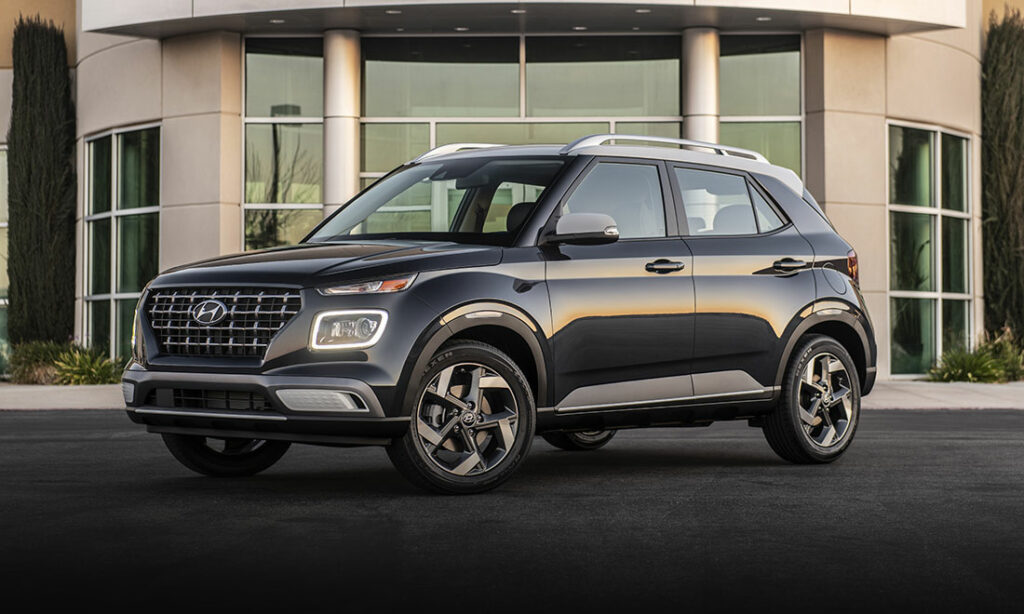
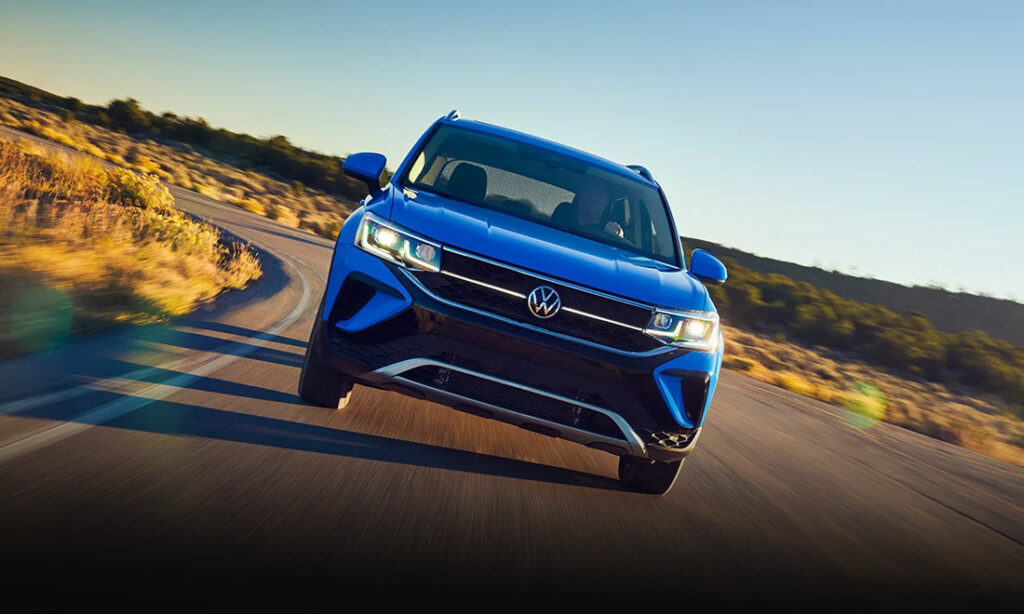
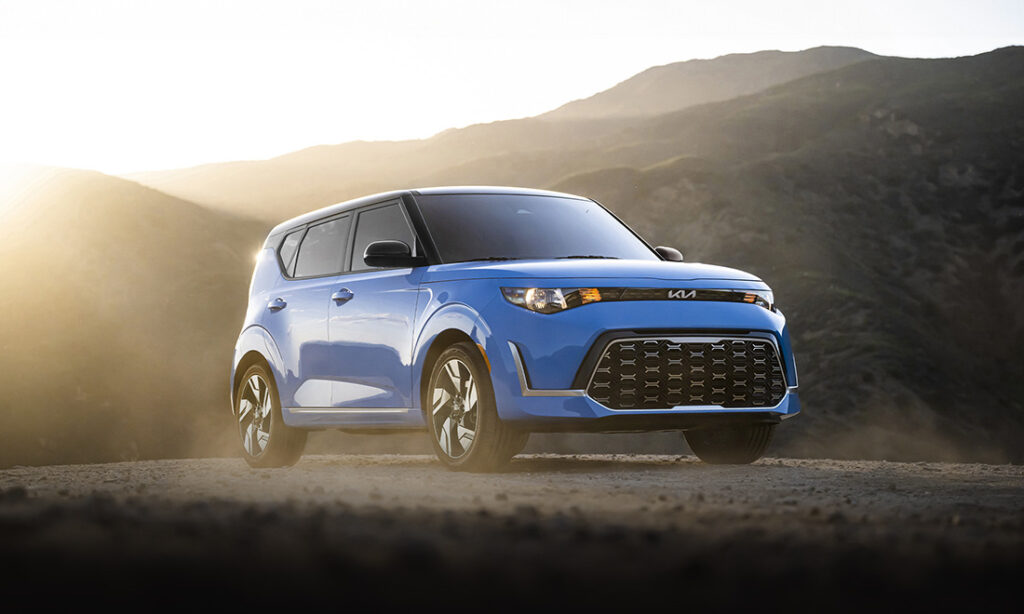
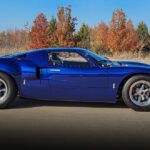









Reminds me of my MG midget – beside body panels.